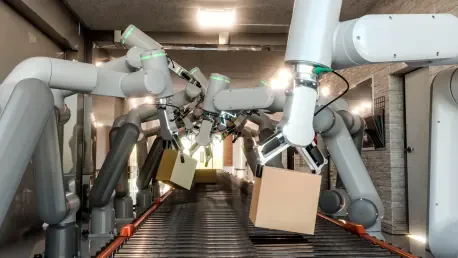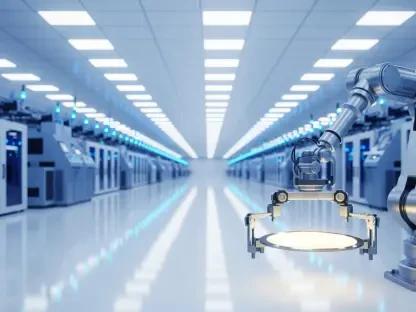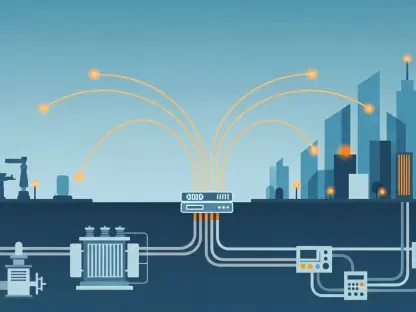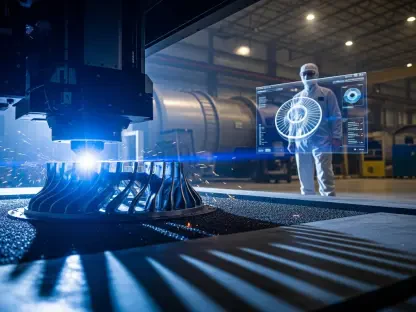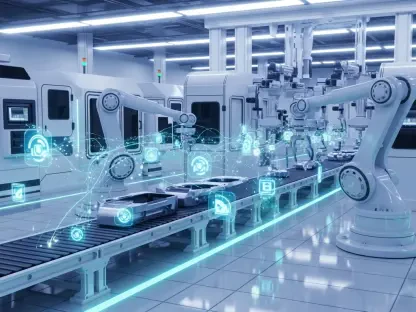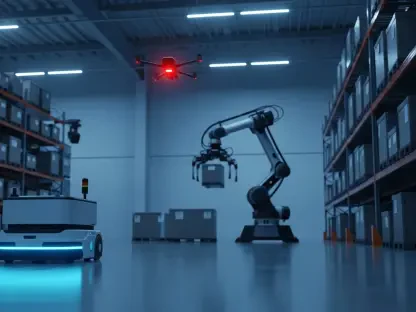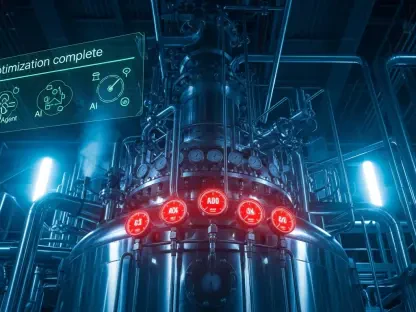Once upon a time, robots were the exclusive domain of global giants. A single industrial arm would cost as much as a house, take months to integrate, and need experts to keep it running. Mid‑sized plants could only watch from the sidelines while wrestling with chronic labor shortages. That world is fading fast. In 2024–25, manufacturing productivity rose by 4.4%, while hourly compensation increased by 6.4%, driving unit labor costs higher. Doing more with human labor alone is no longer sustainable. Today’s question is not whether to automate, but how to afford it.
Imagine the plant manager who sees idle machines because operators are scarce. Traditional integrators quote six‑figure, up‑front costs and long lead times. Then he discovers a different model: pay a monthly fee tied to production volume and let someone else handle maintenance. This subscription‑style approach – robots‑as‑a‑service or “consumption‑based automation” – is quietly rewriting ROI for mid‑market manufacturing. Read on to learn how.
Automation Without Deep Pockets
For decades, small and mid‑sized manufacturers struggled to compete because automation demanded deep pockets. A 2021 report estimated that building a 50‑robot warehouse could cost $2–4 million, excluding maintenance. High capital outlays, long payback periods, and the need for in‑house experts kept these small businesses on the sidelines. Many plants simply pushed humans harder, even as labor costs rose.
Robots‑as‑a‑service flips that paradigm. Instead of buying robots, manufacturers subscribe to automation and pay only for what they use. A3 notes that robots‑as‑a‑service lets companies “scale automation gradually” without heavy ownership costs. Expenditures shift from capital budgets to operating budgets, preserving cash and reducing risk. Subscriptions may be time‑, usage‑, or performance‑based, and unlike leasing, providers remain responsible for installation, upgrades, and support. Customers enjoy rapid deployment, predictable fees, and access to technology they could never afford to own.
The Promise of Consumption‑Based Automation
Consumption‑based automation bundles hardware, software, and expertise into an ongoing service. Providers design and maintain robotic cells – palletizing, machine tending, or inspection – while customers pay a recurring fee. AA Precision Tooling, a three‑person machine shop, saw output jump 60% after adopting a robots‑as‑a‑service machining cell, proving that automation can be accessible and profitable.
Robots‑as‑a‑service aligns financial incentives: providers earn recurring revenue and are motivated to maximize uptime, while customers pay only when robots produce. The market is booming. Future Market Insights forecasts that robots‑as‑a‑service will grow from $2.4 billion in 2025 to $12.4 billion by 2035, with manufacturing already making up 28%. Analysts predict the broader robots‑as‑a‑service economy could reach $34 billion by 2026. Formic, one of the most visible providers, logged over 200,000 production hours in 2024 while maintaining 99.8% uptime and a 98% renewal rate – numbers that underscore soaring demand.
Why are mid‑market manufacturers signing up? Benefits include:
No big checks: Subscriptions replace six‑figure purchases with manageable operating fees.
Built‑in flexibility: Companies can add or remove robots as demand shifts, scaling incrementally without heavy reinvestments.
Continuous updates: Providers bundle maintenance, upgrades, and AI improvements, reducing obsolescence and downtime.
Quick payback: Deployments happen in days, so productivity gains appear sooner.
Flexibility and ROI in the Mid‑Market
Robots‑as‑a‑service shines in environments where product mix changes frequently and labor is scarce. BLS data show that manufacturing output rose by 4.8% while hours worked increased by only 0.4%. However, hourly compensation increased by 6.4%, raising unit labor costs. Rising wages erode margins, yet automation can relieve pressure by reallocating workers to higher‑value tasks.
Tutor Intelligence notes that automation delivers the quickest ROI when aimed at repetitive, high‑impact tasks, like palletizing, pick‑and‑place, packing, and inspection. Robots run continuously, reduce strain, and improve accuracy. With robots‑as‑a‑service, manufacturers can subscribe to a palletizer during peak season and scale down when demand falls, preserving cash and matching capacity to demand.
ROI calculations have shifted from simple headcount reduction to broader metrics like safety, quality, and throughput. When robots handle hazardous tasks – such as deburring – manufacturers not only avoid injuries but also halve processing time. These intangible benefits often outweigh labor savings and are easier to realize under a consumption model.
Challenges and Cautionary Tales
Consumption‑based automation comes with caveats. Integration can be complex, and cost benchmarks are still emerging. Robots must connect smoothly with existing ERP, IoT, and MES systems; without planning, a subscription becomes an expensive experiment.
Workforce transformation is essential. Robots don’t replace people; they free them to focus on higher‑value tasks. Reskilling – teaching operators to program and monitor systems and training everyone on safety and collaboration – is non‑negotiable. Partnerships with technical schools and industry associations accelerate this transition.
Finally, cybersecurity matters. Robots gather operational data and connect to the cloud. Manufacturers must insist on transparent contracts, clear data ownership, and strong network segmentation to protect intellectual property.
Beyond ROI: Intangible Gains and Culture
Numbers on a balance sheet rarely capture the full impact of automation. Robots‑as‑a‑service doesn’t just cut costs; it reshapes how people work and feel. Industrial robots create safer environments by taking over hazardous jobs – automating material handling improves ergonomics and removes workers from risky repetitive motions.
They provide flexibility because they can be reprogrammed for new tasks. Robots mitigate errors, delivering consistent quality and reducing waste. They free floorspace and let humans move into more engaging roles. When workers see robots as partners rather than threats, morale rises and turnover falls, and cross‑functional collaboration flourishes across departments and shifts.
These softer gains translate into better recruitment, higher retention, and an innovative culture. Consumption‑based models encourage experimentation; when the cost of trying is low, teams feel empowered to iterate and improve. Such intangible returns amplify financial ROI and ensure automation becomes a shared journey rather than a top‑down mandate.
A Mid‑Market Blueprint for Robots‑as‑a‑service Success
How should a mid‑market plant begin? This blueprint distills lessons from the field:
Audit processes: Identify repetitive, injury‑prone, or high‑variability tasks – palletizing, pick‑and‑place, packing, or inspection – and focus automation there first.
Measure broader outcomes: Track throughput, scrap, uptime, quality, and worker satisfaction, not just headcount reductions. Formic’s 98% renewal rate shows that satisfied customers stay when robots deliver.
Choose the right model: Match subscription tiers (time‑based or outcome‑based) to production cycles and ensure pricing includes maintenance and updates.
Invest in people and systems: Reskill operators, integrate robots with ERP and IoT platforms, start with a pilot and scale gradually. Transparent contracts should outline uptime commitments, data ownership, and cybersecurity protections.
Standing Out in an Era of Accessible Automation
The democratization of robotics is reshaping mid‑market manufacturing. Trust and partnership – not just hardware – are the new differentiators. When SMMs subscribe to automation, they entrust providers with their production floor, safety, and data; that trust must be earned through reliability, transparency, and shared success.
Consumption‑based automation will only expand. As computer vision, AI, and edge computing make robots more adaptable, tasks once reserved for large plants will become accessible. For mid‑market factories grappling with capital constraints and labor shortages, subscription robotics offers a lifeline.
Ultimately, Robot ROI without capex is about reimagining work. By shifting from ownership to access, manufacturers can turn robots from line‑items into collaborative partners. Companies that map processes carefully, invest in people, and forge strong vendor relationships will transform the next wave of automation into a tide that lifts every worker, product, and community they serve. Local economies benefit.
